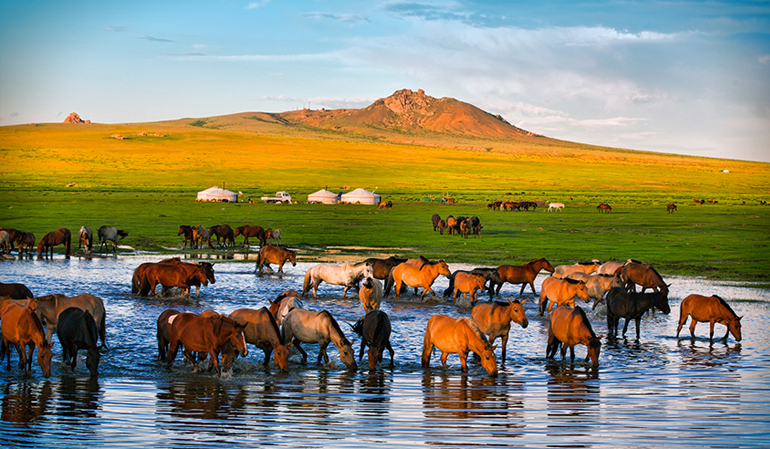Hugnu Tarni National Park

Hugnu Tarni National Park
Hugnu Tarni National Park is situated in the Töv and Bulgan provinces of central Mongolia, about 280 kilometers west of Ulaanbaatar. It covers an area of approximately 46,000 hectares. This is a magnificent place with mountains, forests, steppes, Gobi-type desert and mineral water sources all in one location. One of the main attractions of this area is Uvgun monastery which was built in 17th century by Saint Zanabazar who was a great sculptor and the biggest representative of Buddhism in Mongolia. During Middle Age feuds between Western and Eastern Mongolians (Dzungaria and Khalkh Mongolia) after the collapse of the Mongol Empire. The armies of Dzungarian leader Galdan Boshigt noticed the golden roofs of the temples in Khogno Khan Mountain and massacred the partisan-monks of the rival Zanabazar in 1640, killing them by tying their necks with a rope (the Mongolian verb for the action is khognokh) as if they were goats and sheep. This is the meaning of name of the mountain. After democratic revolution in 1990 the monastery was restored by the granddaughter of the monks who was living at the monastery. This area is pleasant for many activities such as hiking, mountain climbing and horse riding.
One of the most striking features of Hugnu Tarna National Park is Elsen Tasarkhai, a stretch of sand dunes that extend for about 80 kilometers. These dunes are often referred to as the "Mini-Gobi" due to their resemblance to the larger Gobi Desert, providing a unique desert landscape.
Bactrian camelback riding is a popular activity in the park, allowing visitors to explore the vast landscapes in a traditional manner. Local guides often offer camelback tours, providing an authentic Mongolian experience.

